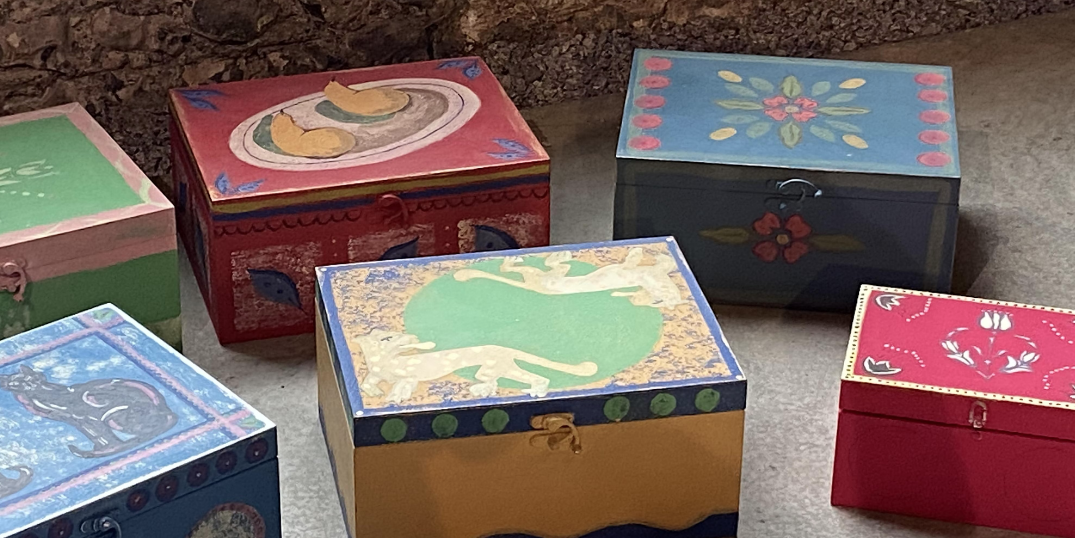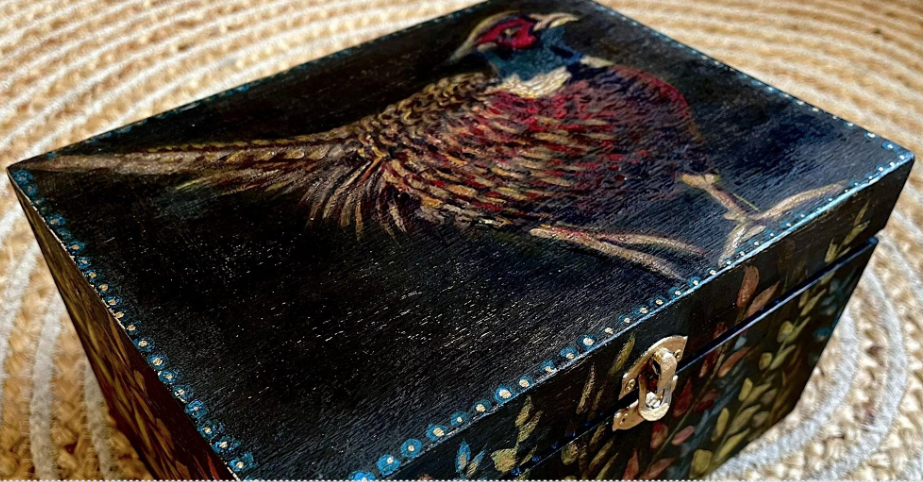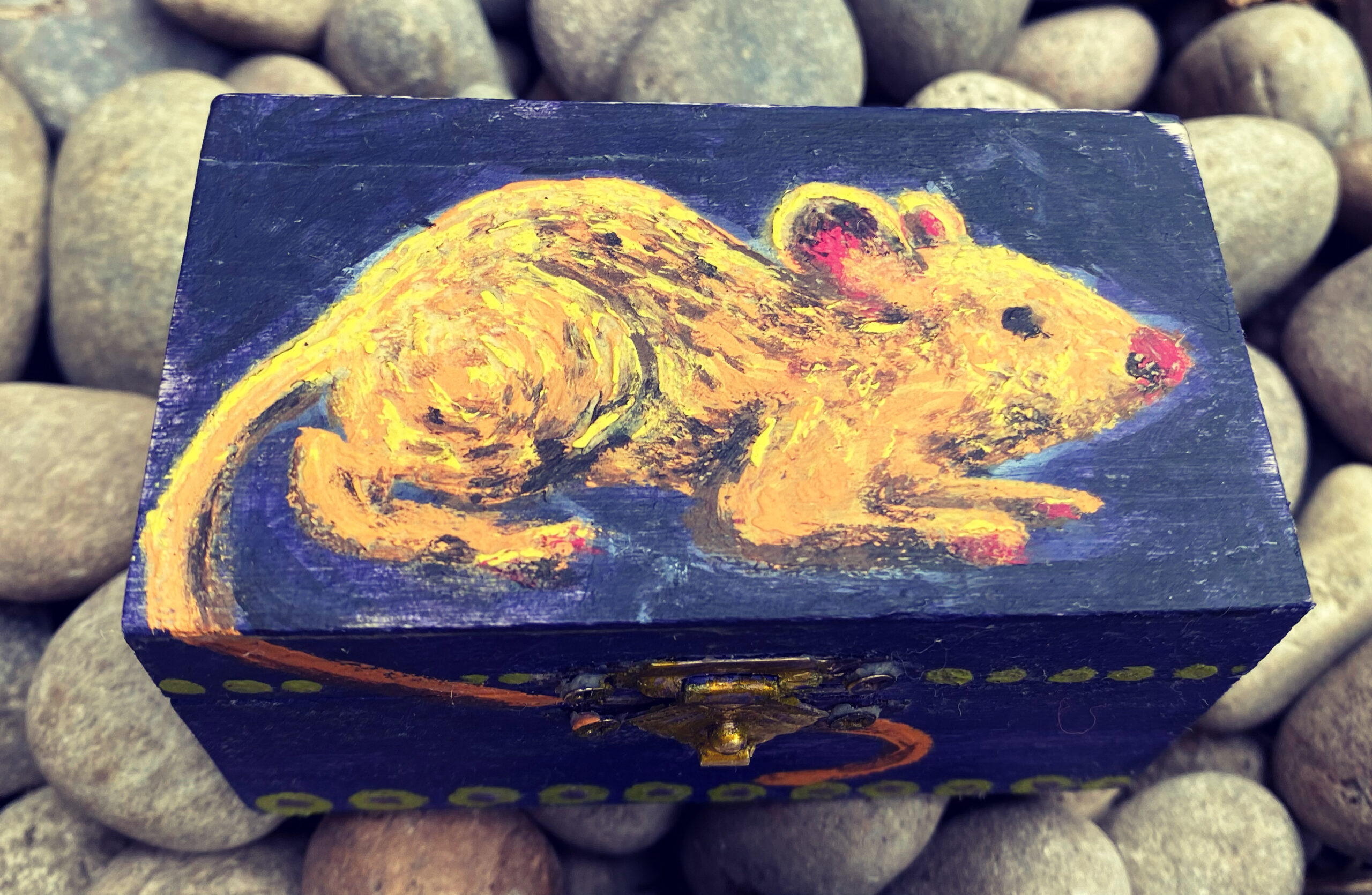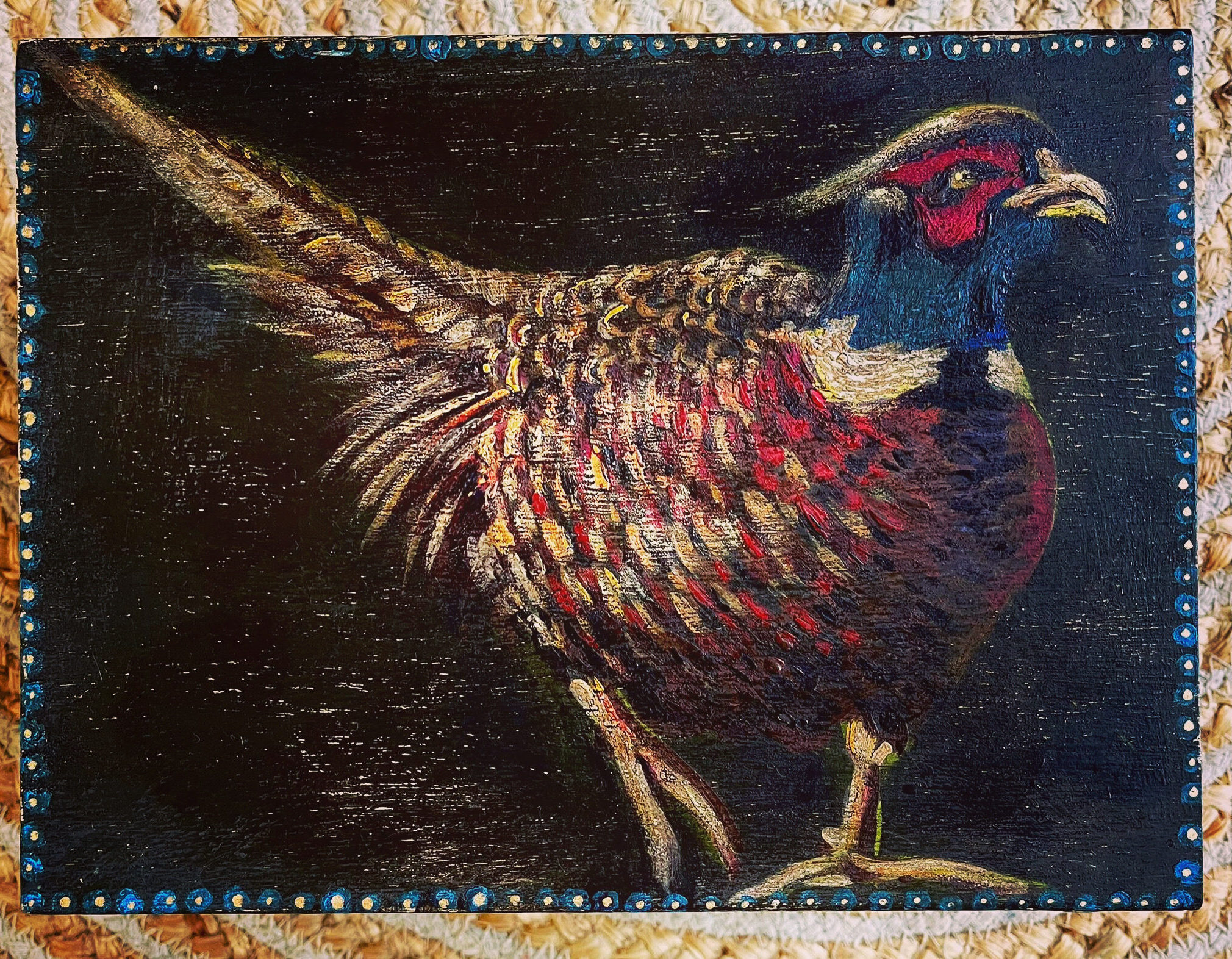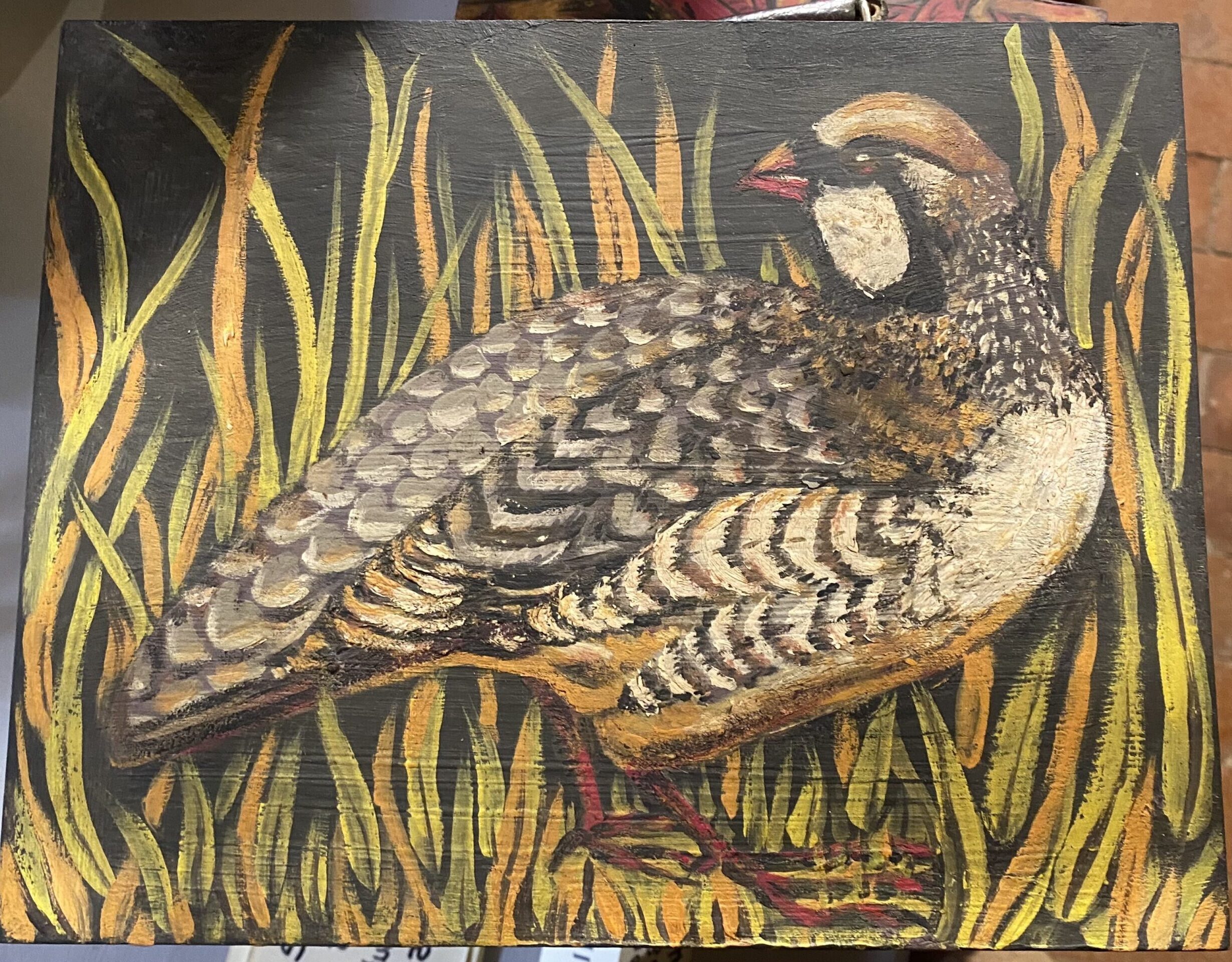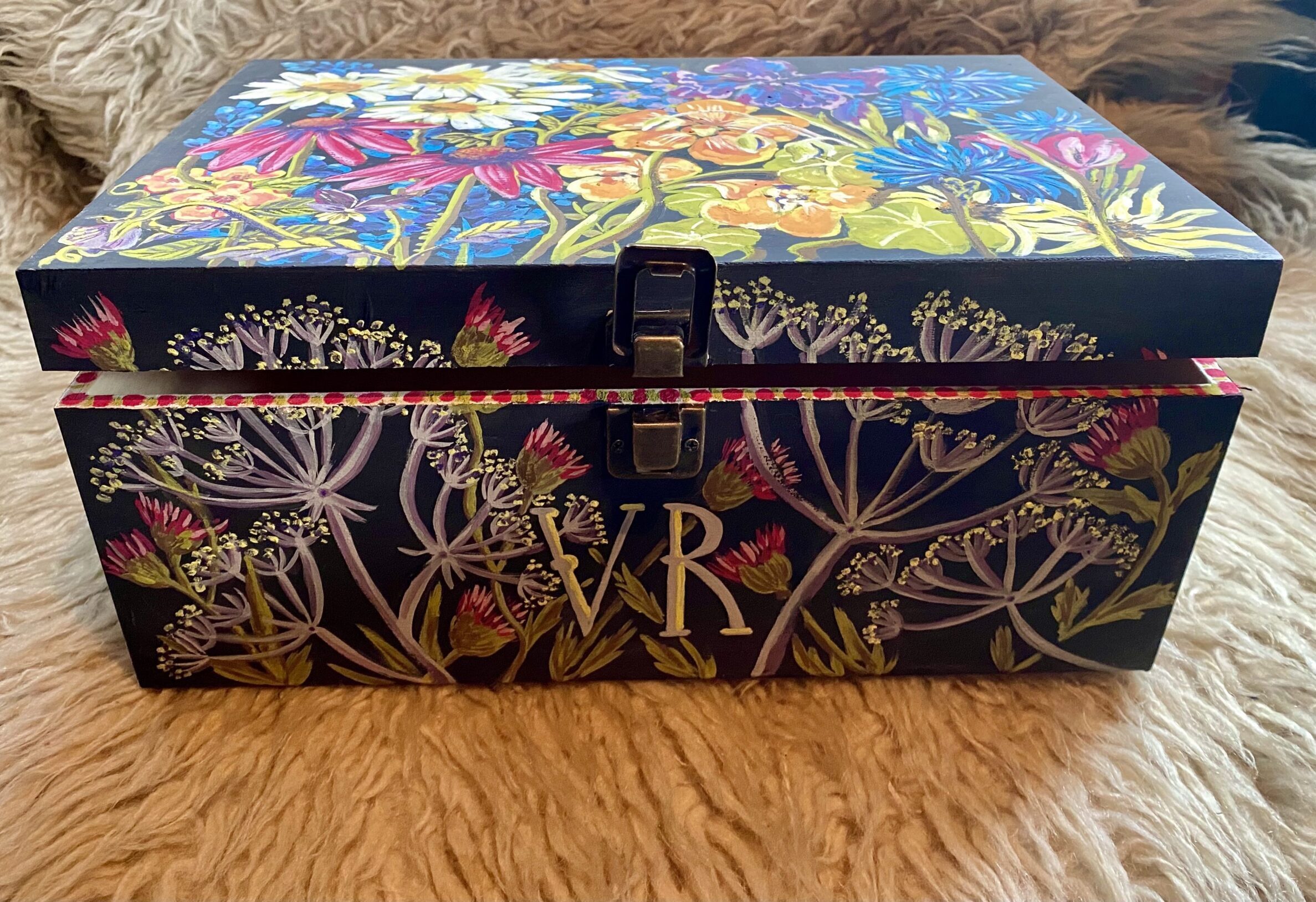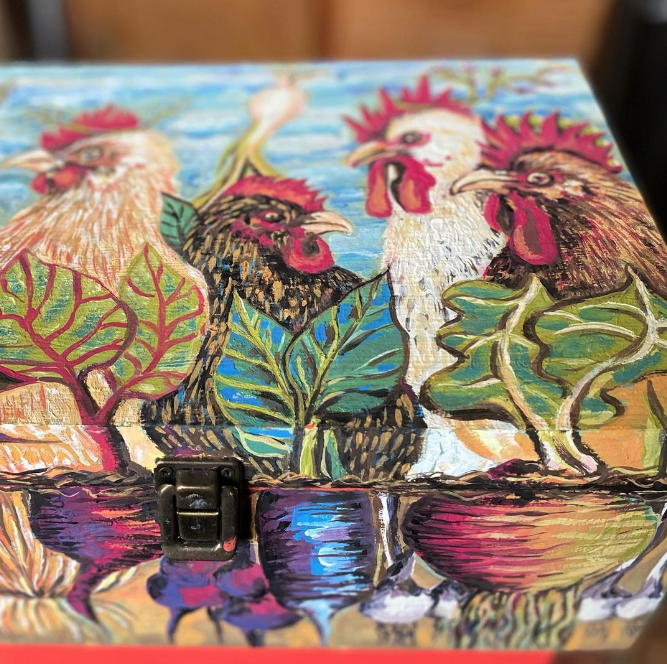Creative
Up-Cycling Workshops
“Doing & Making are Acts of Hope
and as that Hope grows
we stop feeling overwhelmed by the Troubles of the World.
We remember that we, as individuals and groups, can
do something about those Troubles.”
Corita Kent
Workshop Details
Time – 4 hours
Lunch Inc – Yes
Location – East Sussex
Learn how to create beautiful designs that will transform any old tired piece of furniture or up cycled items.
In this workshop you will decorate your own wooden box, exploring mark making and clever techniques with pattern colour and texture. Discover ways of finishing off your personal box to destress and use wax treatments and crackle glazes to create an antique feel to your piece.
This practical workshop suitable for beginners and is lead by artist and teacher Tan Gangar with over 25 years experience.
The workshop includes all materials and a delicious homemade lunch.
From
£78
Per Person
Tales of Creativity
Beavers make their lodges, birds make nests and bees make complex, societal hives. All creatures are ingenious when it comes to making what they need for survival from what is available to them in their local environment. Humans, however, have gone way beyond utility; we make things of beauty, curiosity and comfort. We are the ultimate makers with amazing capacities for creativity. But we’ve gone too far in our bid to make things and thus we have become the world’s wasters, producing for the sake of endless economic growth rather than our actual needs.
“Have nothing in your house that you do not know to be useful, or believe to be beautiful.”
William Morris
Nothing that humans produce can compare with the effortless beauty of the natural world; we cannot produce a rose with such exquisite delicacy of coloured petals, stamens and scent – that is beyond us. However, when we make things, be it our food, our clothes, our objects of beauty, utility and comfort, we are tapping into our creativity as an act not only of pleasure but also of resilience. It’s a political action. When we make stuff ourselves, we loosen some of the threads which tie us into the global growth economy, we become more free, individual and quirky. To make things gives us purpose and satisfaction when our vision becomes a tangible object. To create is to be inspired by an idea, with the rush of positive endorphins that follow on from a moment of inspiration; to be creative is good for your physical and mental health. To make and re-purpose using what is around you is at the very core of a resilient way of life.
To create something of beauty or purpose with your own hands is a soulful act, whether it is a painting, a simple clay trinket pot, or a knitted garment, we are connecting with a source of our own inspiration which is completely unique to each of us. We cannot tell where inspiration comes from; it’s not a mathematical equation or a process, it’s a eureka moment!
From the idea through to the completed item there is the mind-body connection whilst we undertake the task in hand. Take knitting, for instance. To those who can’t knit the very process of creating fabric from a simple thread by just the simple flashing of needles and flicking of fingers, can seem like a mystifying procedure. For time immemorial yarn has been spun and knitted. Knitting is a craft and a skill which links us to our ancestors, one which has been passed down through generations. In mythology witches and maidens alike have spun yarn, and cloth has been woven and knitted in literature throughout history, often as a symbolic act which represents quietude and wisdom. In the novel ‘To The Lighthouse’ by Virginia Woolf,
“Mrs. Ramsay flashed her needles. Mr. Ramsay repeated, never taking his eyes from her face, that he was a failure. She blew the words back at him. “Charles Tansley . . . ” she said. But he must have more than that. It was sympathy he wanted, to be assured of his genius, first of all, and then to be taken within the circle of life, warmed and soothed, to have his senses restored to him, his barrenness made fertile, and all the rooms of the house made full of life—the drawing-room; behind the drawing-room the kitchen; above the kitchen the bedrooms; and beyond them the nurseries; they must be furnished, they must be filled with life.Charles Tansley thought him the greatest metaphysician of the time, she said. But he must have more than that. He must have sympathy. He must be assured that he too lived in the heart of life; was needed; not only here, but all over the world. Flashing her needles, confident, upright, she created drawing-room and kitchen, set them all aglow; bade him take his ease there, go in and out, enjoy himself. She laughed, she knitted. Standing between her knees, very stiff, James felt all her strength flaring up to be drunk and quenched by the beak of brass, the arid scimitar of the male, which smote mercilessly, again and again, demanding sympathy.He was a failure, he repeated. Well, look then, feel then. Flashing her needles, glancing round about her, out of the window, into the room, at James himself, she assured him, beyond a shadow of a doubt, by her laugh, her poise, her competence (as a nurse carrying a light across a dark room assures a fractious child), that it was real; the house was full; the garden blowing.”
Extract from: To The Lighthouse. Virginia Woolf
Knitting originated amongst groups of fishermen as they mended their nets. The women in the fishing communities would also mend nets whilst their menfolk went out to sea and this they would do together, which fostered strong communities which was so vital when the seafaring way of life could be so perilous, leaving many of the women bereft and widowed. It is the fishing and farming communities that have given us some of the most enduring fashions; the polo-necked fisherman’s jumper, the Guersey sweater, and Fairisle patterned knitwear.
Knitting can be sociable as well as productive and it is a lovely way to get a group together with a common purpose and one of the best inter-generational activities where elders can pass on their knitting skills as well as their stories, anecdotal wisdoms and lessons in resilience to younger generations. And so we follow in the footsteps of our grandparents.
